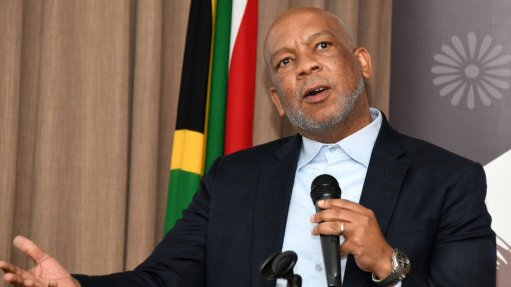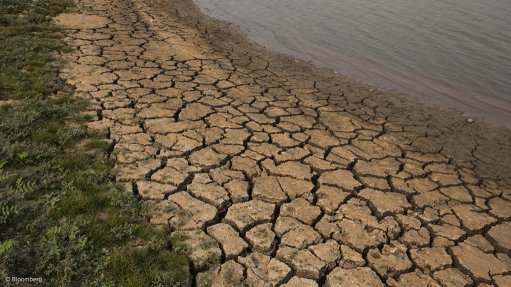Bones tell slavery story
How enslaved Africans were shipped across the Atlantic over centuries is a story that has been told ad nauseum, generating a wealth of knowledge about this massive blot on the history of mankind. Surprisingly, in Latin American countries like Mexico, African roots are well-nigh invisible in narrations of the ancestries of the peoples of these lands.
This is despite the fact that scores of African slaves were for many, many years shipped to the Viceroyalty of New Spain – whose geographical footprint covered modern-day Mexico, the Caribbean and parts of the US. The Africans were brought in to compensate for indigenous labourers who had perished during the conquest of the Americas by Europeans and those who had succumbed to diseases such as smallpox, measles and typhoid fever, to which Africans apparently displayed higher levels of resistance.
But, literary through their bones, Africans have asserted their place as part-ancestors of a portion of the Mexican population. In a new study published in the journal Current Biology, based on a scrutiny of skeletons recovered from a mass burial site in Mexico City, scientists aver that hundreds of thousands of enslaved Africans form a significant proportion of Mexico’s genetic and cultural heritage.
The study, whose lead author is Rodrigo Barquera, of the Max Planck Institute for the Science of Human History, in Germany, entailed an investigation of three skeletons recovered from the mass grave. All three turned out to be African, to have lived between 1436 and 1626 and to have originated in Southern or West Africa.
A common denominator among all three – besides genetic evidence of their having been sourced by their masters from Southern or West Africa – was that they had endured a life of hardship. Evidence obtained by the scientists suggests that the first individual, who must have died aged about 24, had suffered from “conditions associated with diet, such as anaemia and malnutrition, as well as parasitic infections and blood loss”.
The skeleton also had green colouring and imprinted lines in the part of the spine in the ribs, which, the study’s authors surmise, were the impacts of a gun.
As evidence of his African origins, the study’s authors state: “The patterns seen in the maxillary incisors are consistent with a V-shaped modification present in the Fang and other ethnic groups from the coastal region of central West Africa (present-day Equatorial Guinea, northern Gabon and southern Cameroon).”
The second individual must have died at the age of 25, and the scientists believe that a machete wounded his skull and that he had suffered skeletal changes, owing to intense, gradual compression of his spinal discs. The patterns of his teeth, according to the scientists, had a striking similarity to those of the D’Zem people, who inhabited modern-day Cameroon.
The third individual, also believed to have died at 25, had lesions on the skull, possibly as a result of malnutrition and anaemia, parasitic infections and blood loss and periodontitis. There was also evidence that he had suffered from infections in the long bones of his body and a series of skull and leg fractures. Similar to the second skeleton, teeth modifications were found that suggested he may have been shipped to Mexico from Cameroon.
It is clear from the stories told by these skeletons that there is more to Mexicans’ ancestry than the conquering Europeans and the indigenous people they found in the land. As the authors of the study published in Current Biology state: “This other root has, for so long, been disregarded as part of the Mexican history. And Mexican society deserves to know more about this third root. The social implications of these individuals to be visible again, to be part of this whole Mexican diversity present in modern Mexico [is important].”
Comments
Press Office
Announcements
What's On
Subscribe to improve your user experience...
Option 1 (equivalent of R125 a month):
Receive a weekly copy of Creamer Media's Engineering News & Mining Weekly magazine
(print copy for those in South Africa and e-magazine for those outside of South Africa)
Receive daily email newsletters
Access to full search results
Access archive of magazine back copies
Access to Projects in Progress
Access to ONE Research Report of your choice in PDF format
Option 2 (equivalent of R375 a month):
All benefits from Option 1
PLUS
Access to Creamer Media's Research Channel Africa for ALL Research Reports, in PDF format, on various industrial and mining sectors
including Electricity; Water; Energy Transition; Hydrogen; Roads, Rail and Ports; Coal; Gold; Platinum; Battery Metals; etc.
Already a subscriber?
Forgotten your password?
Receive weekly copy of Creamer Media's Engineering News & Mining Weekly magazine (print copy for those in South Africa and e-magazine for those outside of South Africa)
➕
Recieve daily email newsletters
➕
Access to full search results
➕
Access archive of magazine back copies
➕
Access to Projects in Progress
➕
Access to ONE Research Report of your choice in PDF format
RESEARCH CHANNEL AFRICA
R4500 (equivalent of R375 a month)
SUBSCRIBEAll benefits from Option 1
➕
Access to Creamer Media's Research Channel Africa for ALL Research Reports on various industrial and mining sectors, in PDF format, including on:
Electricity
➕
Water
➕
Energy Transition
➕
Hydrogen
➕
Roads, Rail and Ports
➕
Coal
➕
Gold
➕
Platinum
➕
Battery Metals
➕
etc.
Receive all benefits from Option 1 or Option 2 delivered to numerous people at your company
➕
Multiple User names and Passwords for simultaneous log-ins
➕
Intranet integration access to all in your organisation


















